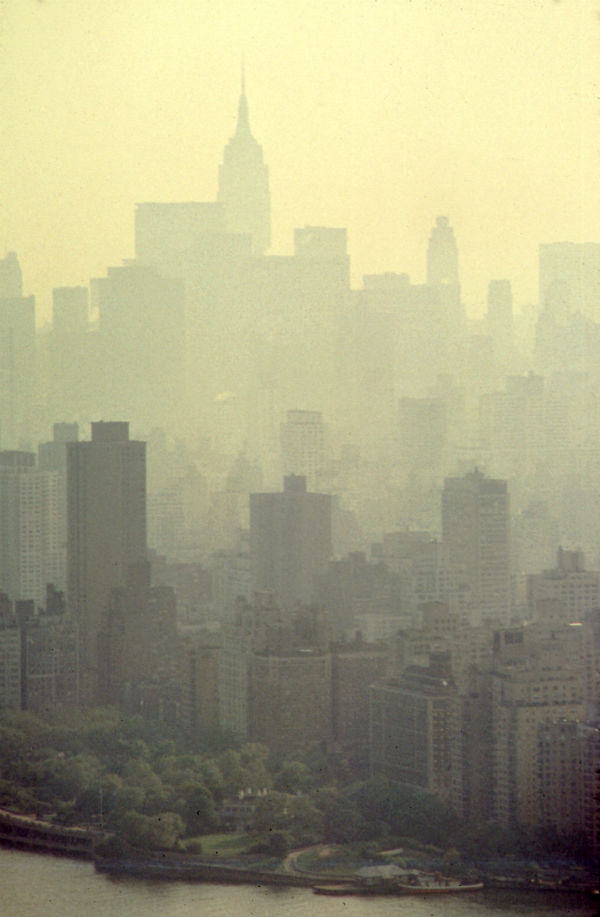 The New York League of Conservation Voters Education Fund (NYLCVEF) last night released Breaking Down the Barriers to Renewable Energy Siting: Recommendations Report identifying recommendations to reform Article 10 and site large-scale renewable energy projects in New York State. The report, released at the Alliance for Clean Energy New York’s Clean Energy Fall Reception, builds on the organization’s background paper about the barriers to siting renewable energy released earlier this year.
The New York League of Conservation Voters Education Fund (NYLCVEF) last night released Breaking Down the Barriers to Renewable Energy Siting: Recommendations Report identifying recommendations to reform Article 10 and site large-scale renewable energy projects in New York State. The report, released at the Alliance for Clean Energy New York’s Clean Energy Fall Reception, builds on the organization’s background paper about the barriers to siting renewable energy released earlier this year.
The report comes on the heels of the passage of the landmark Climate Leadership and Community Protection Act, which mandates net-zero gas emissions across the economy by 2050. With more than 40 projects initiating the Article 10 process and zero projects breaking ground under the law since its inception in 2011, the new report outlines a series of recommendations to streamline the siting of onshore wind and solar projects and help the state achieve its ambitious goals.
The report includes a series of regulatory, budgetary and legislative recommendations to increase community engagement and participation, incentivize creative and flexible local funding arrangements, and expedite the permitting process. The recommendations build on the work of environmental and energy advocates in finding solutions that benefit all parties in the state’s transition to renewable energy.
Specific recommendations include:
- Calling on DPS to audit Article 10 regulations and make updates that streamline and improve the process.
- Excluding funds a municipality may receive from a renewable energy project from the state’s 2% property tax cap, so that communities have more freedom to negotiate successful and creative benefit agreements.
- Ensuring local appointments are made to Siting Board by enabling the local executive or supervisor to make them if the Governor and the Legislature fail to act.
- Establishing a fund or bank to mitigate or otherwise offset any impact a project might have on a threatened or endangered species or sensitive habitat.
- Dedicating $1 million in funding for staff at the state’s nine regional planning boards to assist municipalities with planning.
- Adding more staffing at the state Department of Public Service (DPS), the Department of Environmental Conservation (DEC), and the Department of Agriculture and Markets (DAM) to account for the increase in Article 10 applications, including adding a staff member dedicated to ensuring the agencies are communicating and coordinating efficiently.
- Amending the regulations for wetland delineation range from 500 feet to 100 feet to align with regulations for other state wetland development projects.
- Offering more incentives to local communities to host renewable energy projects.
Julie Tighe, President of the New York League of Conservation Voters, said, “The newly-passed Climate Leadership & Community Protect Act requires our state to have a 100% clean energy grid by 2040. The only way to meet this ambitious standard is to expand and expedite the siting of renewable projects. That’s why we held roundtables that got stakeholders involved and engaged, elicited cross-sector conversations, and collected recommendations about how we can streamline the Article 10 process to get more projects sited. We thank all stakeholders who collaborated with us on this report. Next, we will work with the State and partners to develop strategies for how to move forward with these recommendations.”
Alliance for Clean Energy New York provided input for the report.
“It is clear that New York needs to step up the pace of renewable energy development to reach our ambitious goals. It is so refreshing that NYLCVEF is tackling this important but complicated issue. It is imperative — and possible — that we find a way to have wind power and solar permitting that is responsible and inclusive, but also timely and efficient. We were happy to provide input and collaborate with stakeholders on these recommendations,” said Anne Reynolds, Executive Director of the Alliance for Clean Energy New York.
This report follows four stakeholder roundtables convened this year by NYLCVEF in Albany, Buffalo, Long Island and Syracuse. These meetings brought together thought leaders, state decision-makers, local government representatives, renewable energy developers, environmental organizations, regional planning groups, and others with the goals of identifying ways to streamline the siting process and improving engagement with local communities. NYLCVEF’s report stresses the importance of proactive and early engagement in the siting process to build relationships with local leaders, address community concerns, and get ahead of any misinformation that may develop.
The New York League of Conservation Voters Education Fund engages and educates New Yorkers on environmental issues and the environmental decision-making processes at the local, regional, state and federal levels. NYLCVEF fosters open, nonpartisan discussion on environmental policy and empowers New Yorkers to be effective advocates on behalf of the environment. Visit www.nylcvef.org for more information.
Photo credit: Skysraper Manhattan smog 1971
Become a Harlem Insider!
By submitting this form, you are consenting to receive marketing emails from: Harlem World Magazine, 2521 1/2 west 42nd street, Los Angeles, CA, 90008, https://www.harlemworldmagazine.com. You can revoke your consent to receive emails at any time by using the SafeUnsubscribe® link, found at the bottom of every email. Emails are serviced by Constant Contact








